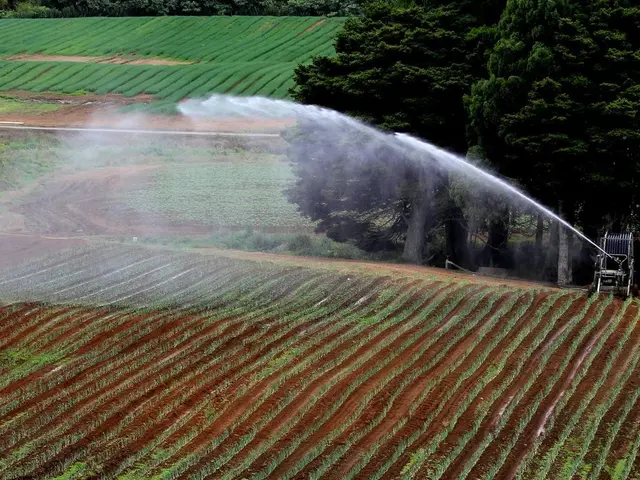Flying High: Why Drones Rule the Skies on Mount Everest
Unmanned Aerial Vehicles Deliver Cargo to Mount Everest Peak
Everest, the highest peak on Earth, is no stranger to cutting-edge technology, and drones are making their mark by revolutionizing waste removal, supplying essentials, and making Sherpa work safer.
Drones, once synonymous with aerial filming and measurements, now offer invaluable support on the 8,849-meter-high mountain. Chinese drones, like the FlyCart 30 from DJI, are now Team Everest's unsung heroes, transporting cargo between the base camp and Camp 1, situated above 6,000 meters.
"Our drones carry ladders, tents, ropes, and oxygen bottles," explains Raj Bikram Maharjan, CEO of Airlift Technology in Kathmandu. "What used to take Sherpas seven hours now takes only seven minutes."
But why the rush? The hazardous Khumbu Icefall, with its ice towers and treacherous crevasses above the base camp, poses a significant challenge to climbers on their ascent. Drones minimize trips through this treacherous zone, making climbing safer.
Maharjan credits a partnership between the Khumbu Pasang Lhamu municipality and DJI for this innovation. Initially, these drones were destined for waste disposal; after a successful trial phase in spring 2024, they were handed over to Airlift for transportation duties.
Together with the Sagarmatha Environmental Protection Committee, the municipality ensures the route through the Khumbu Glacier remains passable and waste on Everest is removed. "Since the pilot project, we've taken down hundreds of kilograms of waste from Everest and Ama Dablam," says Mingma Chhiri Sherpa, the municipality's mayor.
With a battery, drones can carry up to 40 kilograms of cargo for nine minutes through the air or 30 kilograms in 18 minutes with two batteries. While performance drops significantly at high altitudes, drone deployments are on the rise.
Last year, drones brought oxygen bottles to Camp 1 and carried waste. This year, they also served as cartographers, mapping the Khumbu Icefall to find new, safer routes. "With 3D mapping, we can identify crevasses and gauge their depth," says Maharjan.
Some critics worry that drones may put Sherpa jobs at risk. But Maharjan asserts that the Sherpa guides are delighted. "Many Sherpas don't want to work in the Khumbu Icefall due to its inherent dangers. They're glad that the work is now done by drones."
While helicopters are responsible for creating a cacophony in the Everest region, Jost Kobusch, a professional German climber, prefers drones over helicopters despite their use in filming. "If a drone flies high enough, you can't hear it anymore," says Kobusch, who is less concerned about drones than about the noise generated by helicopters.
Traditional transportation methods, such as human porters, donkeys, and yaks, persist despite the growth of modern aerial solutions. However, expedition organizers, like Lukas Furtenbach, appreciate the drones' potential. "Drones could save lives by reducing the need for human porters in the dangerous Khumbu Icefall," says Furtenbach.
High costs currently hinder widespread access to this technology, with each drone costing around 50,000 dollars. However, Maharjan foresees a drone boom in the future. "Drones have a bright future on Everest and throughout the Himalayas."
References:
- ntv.de, Dirk Godder and Roshan Sedhai, dpa
- Liquid Sodium as Fuel: "Crazy" Fuel Cell to Power Electric Airplanes
- Knowledge Panorama: Kami Rita Breaks Own Record, Nepali Sherpa Climbs Mount Everest for 31st Time
- New Record for Mr. Cool, Climbs Mount Everest for 19th Time
- Dangerous Ascent
- First Death of the Climbing Season, Filipino Climber Dies on Mount Everest
- Donkeys and Yaks
- First Ascent 70 Years Ago, How the Myth of Mount Everest Has Changed
Tags:- Himalaya- Mount Everest- Drones
- In the Himalayan region, drones are becoming integral to the lifestyle and outdoor-living, transforming tasks like waste removal, supply of essentials, and making Sherpa work safer, particularly on Mount Everest.
- Advancements in technology have led to the integration of gadgets like drones in home-and-garden, as well as sports, with Mount Everest becoming a testing ground for their capabilities, such as mapping routes and carrying cargo.
- Beyond just filming and measurement, drones, such as the FlyCart 30 from DJI, are playing a significant role in the sports industry, reducing the risks for climbers by minimizing their exposure to hazardous areas like the Khumbu Icefall on Mount Everest.








